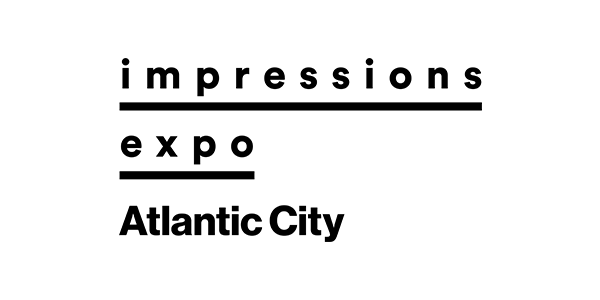While the saying, “Necessity is the mother of invention,” may be true, it begs the question: Who is the mother of innovation? Truthfully, necessity also could be the mother of innovation, with technology being the father. If that’s the case, innovation’s “father” has been a driving force in many industries for years. The more advanced the technology, the more innovation that can be derived from it.
Apparel decorating sits low on the totem pole of advanced technology. This industry has been driven largely by necessity. Huge innovations, such as automatic thread-color changes and thread trimming, have been embroidery staples for quite a while. These developments dominated the landscape for many years because technology didn’t play a role in their continued development.
Since apparel decorating is a small market, the number of companies investing in innovation has been extremely limited, especially in the embroidery sector. However, this doesn’t mean that embroidery innovation has died; it only means changes and new technology becomes less frequent.
Let’s examine some embroidery technological advancements and explore how they benefit the user.
Digitally Controlled Presser Foot
Most presser feet are adjustable through a mechanical adjustment, but a truly digital presser foot has many advantages. If you don’t adjust a presser foot, it will come down to the same spot every time. It can completely miss touching the fabric or it can pound into thicker items, such as a cap with 3-D foam. This contact can cause unnecessary thread breaks or damage the fabric.
If you’ve ever embroidered a thick leather jacket and experienced presser-foot bruising, then you know firsthand the type of damage it can cause. A digitally controlled presser foot adjusts, with the press of the button, to a precise distance from the needle plate. This results in smoother embroidery, fewer thread breaks and less fabric damage.
Independently Controlled Needle Bar
There’s nothing sexy about an independently controlled needle bar, but it’s very effective. In most cases, the presser foot and needle bar lift simultaneously. However, one of the drawbacks of this arrangement is that there’s nothing to hold the fabric in place while the needle is lifting out of the fabric. The result can be “flagging,” where the material bounces up and down as embroidery occurs.
An independently controlled needle bar and presser foot operate on their own time cycles. For example, the presser foot can remain in the “down” position — holding the fabric in place — while the needle starts to exit the fabric. Once the needle starts to lift with the fabric held in place, then the presser foot also can lift, which will nearly eliminate the flagging effect.
From a quality standpoint, you can minimize fabric distortion, which can increase quality. From an innovation standpoint, the independently controlled needle bar goes hand in hand with the digitally controlled presser foot.
Automatic Tension Management
Upper thread tension has been a battle for years. Most of the time, the issue is operator related. Consider this scenario: An embroidery-machine operator begins his or her shift and adjusts tension according to personal preferences. Then, another operator comes in and adjusts to a different tension preference. As a result, the machine doesn’t have any consistent tension.
One important factor that people fail to realize is that tension can vary according to the type of stitch, which further creates irregular tension. Enter automated tension management, an innovation that enables the machine to analyze a stitch file and adjust to the proper tension instead of operators having to do it manually. The machine knows when a stitch type is a run, satin or fill. It also learns based on the material being stitched, as different material thicknesses can affect thread usage. This results in consistent tensions for all stitch types.
Inline Thread Colorization
With this process, the thread is colorized as it is being fed to the embroidery machine. This is a tremendous innovation that serves a variety of needs.
One of the most creative needs it handles is true color blending. Thread is blended to perfection and you can achieve a variety of different effects that otherwise would be extremely difficult or impossible to reproduce. Another benefit is the ability to create samples using virtually any thread color without worrying about whether you have it in stock.
With inline thread colorization, a single, specially coated white thread is used. It progresses through the colorizing, drying and lubrication processes. Since the thread is colorized inline, the embroidery machine doesn’t have to trim to do a color change, which results in a very smooth backside on an embroidered garment. With this process, variations among multiple designs are normal.
Speed
How fast can an embroidery machine operate? That’s like asking how fast a car can be driven. Different automobiles have different top-end speeds, but most drivers never experience them. People operate their vehicles at safe cruising speeds based on road conditions.
Embroidery machines are the same. Innovation is driving machine speeds higher, but the important factor is the machine’s proper cruising speed based on the product and design being embroidered. Speed causes friction, which is a culprit of thread breaks. Always evaluate machine speed based on a realistic cruising speed. With greater speed comes greater risk. The challenge is to find the perfect cruising speed for the conditions.
Visual Hooping Alignment
These systems help ensure a design is properly positioned within the hoop and on the garment. This could relate to positioning a design above or on a pocket; properly aligning a design in relation to the placket; getting precise placement on a striped garment; or aligning left- and right-chest embroidery. These hooping-alignment systems can be as simple as a laser crosshair, a projected grid or the actual design being projected — at scale — onto the garment that is being hooped.
Machine Networking
Finally, innovations in machine networking have reached new and impressive levels. Two-way communication — where the embroidery machine reports important statistics — help shop owners or managers get a true gauge on the production environment. Reports that provide details about design, production, thread breaks and more help increase productivity. Seeing issues in real time can help an organization take the necessary steps to solve them as they happen, rather than after the fact.
An example of this would be repeated thread breaks. An operator may simply keep fixing the thread break and restarting the machine. However, doing this doesn’t solve the problem. With two-way communication, the embroidery machine can report excessive thread breaks to a manager or technician so that the problem can be corrected.
Other components of two-way communication include the ability to automatically set thread colors when a design is loaded; automatically adjust machine speed based on the garment type; or send messages to the machine’s control panel to alert an operator of a specific design instruction.
As necessity continues to dictate everything and technology continues to be the driver, embroiderers can rest assured there’s innovation that’s in development and eagerly awaiting its debut.
Ed Levy has more than 25 years of apparel-decorating experience. Levy, who’s director of software technologies for Hirsch Solutions, is an in-demand speaker at trade shows and regular contributor to industry magazines. For more information or to comment on this article, email Ed at [email protected].
Articled updated Nov. 10, 2023.





